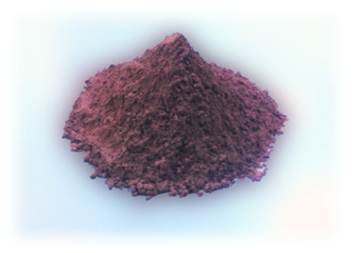Beyond traditional technology: unique advantages and application prospects of wet process copper powder
What are the characteristics and advantages of wet-process copper powder? What applications should we pay attention to?


Copper powder is a type of fine particle powder, and powders of different sizes possess different properties. When the particle size decreases to a certain value, the material's performance undergoes significant changes. Generally, copper powder can be divided into three grades: nano, submicron, and micron. With the material's ultra-fineness, changes occur in surface electrons and crystal structures of ultrafine particles, exhibiting properties vastly different from those of larger particle materials, such as lower melting point, higher vapor pressure, enhanced chemical reactivity, lower sintering temperature, and excellent catalytic performance.
The wet-process (liquid-phase reduction) involves controlling certain reaction conditions and using a reducing agent in a metal cation solution to precipitate metal powder at the micron or even nano level. The wet-process reduction method has become the mainstream production process for copper powder due to its advantages of low processing temperature, low production cost, ease of controlling composition, and producing copper powder with uniform particle size and good dispersion. However, in the wet-process preparation of ultrafine copper powder, post-treatment processes often face difficulties in solid-liquid separation, which is a challenge that manufacturers are eager to solve.
Wet-process copper powder has several advantages, and with proper surface treatment processes, it can effectively reduce the problem of copper powder oxidation when exposed to air.
① Uniform particle size
② Wide product range (from submicron to micron size)
③ Low impurity content
④ Excellent dispersibility in typical resin solutions
⑤ Minimal coarse particles and agglomerates
⑥ Both spherical and flake copper powders are available.
Copper powder has a wide range of applications, including thick-film conductive pastes, conductive adhesives, MLCC/LTCC terminal electrodes, etc. Generally, spherical and flake copper powders with particle sizes around 1-5um are commonly used. However, in recent years, due to considerations such as ESG (low-temperature sintering) and cost (substituting silver paste), the demand for submicron and nano-grade copper powders has become increasingly clear.
| Copper Powder Type | D50 (μm) | Specific Surface Area (m²/g) |
|---|---|---|
| Spherical Copper Powder FMC-SB | 0.8 | 1.25 |
| Spherical Copper Powder FMC-10 | 1.6 | 0.53 |
| Spherical Copper Powder FMC-30 | 3 | 0.23 |
| Spherical Copper Powder FMC-40 | 4.3 | 0.17 |
| Flake Copper Powder FMC-11H | 2 | 0.52 |
| Flake Copper Powder FMC-31H | 3.9 | 0.39 |
| Flake Copper Powder FMC-41H | 5.1 | 0.3 |
#Conductive paste #MLCC #Solar energy #Copper powder
CONTACT US
Kelly Chemical Corporation
Electronics
TEL:(02)2762-1985 ext 11200
Online Message
Leave your contact information,
and we will get in touch with you soon.
Email Consultation
After receiving your email,
we will process it as soon as possible.send Email